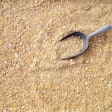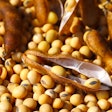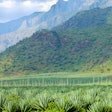I was astonished when one of my clients asked me to evaluate an herbal source of lysine. This was about a year ago, but last week I found myself explaining again why herbal methionine cannot replace crystalline methionine (to another customer).
It appears some suppliers of herbal products are clearly confused on what lysine and methionine, or any other amino acid, is about. This is clearly not their fault, but rather a side effect of dubious health claims associated with such amino acids in human nutrition advertisements.
Lysine and methionine are available as expensive crystalline forms of two very valuable natural amino acids. Crystalline or natural, they are used for protein synthesis throughout the body. Natural sources are proteins of vegetable or animal origin, such as soybean meal or skim milk. As these herbal products are plant based, it follows that these amino acids will be part of the proteins in the respective plants. Now, in one of the most common plant protein sources, soybean meal, lysine makes up approximately 6 percent of the total protein fraction. So, with 44-48 percent total crude protein, one expects no more than 3 percent lysine in soybean meal. This is textbook information.
The difficulty is how to explain how an herbal product (with total crude protein being less than 3 percent) can provide enough lysine to replace crystalline L-Lysine HCL (78.5 percent lysine) on a 1:1 basis. The same is true for methionine, and I am sure if I look around I will find similar herbal products with claims of replacing other expensive crystalline amino acids.
I wish all these claims about herbal amino acid replacements were true. Crystalline tryptophan is ridiculously expensive, and like me, anyone who makes piglet feeds would rush to buy a cheap replacement of it.


















